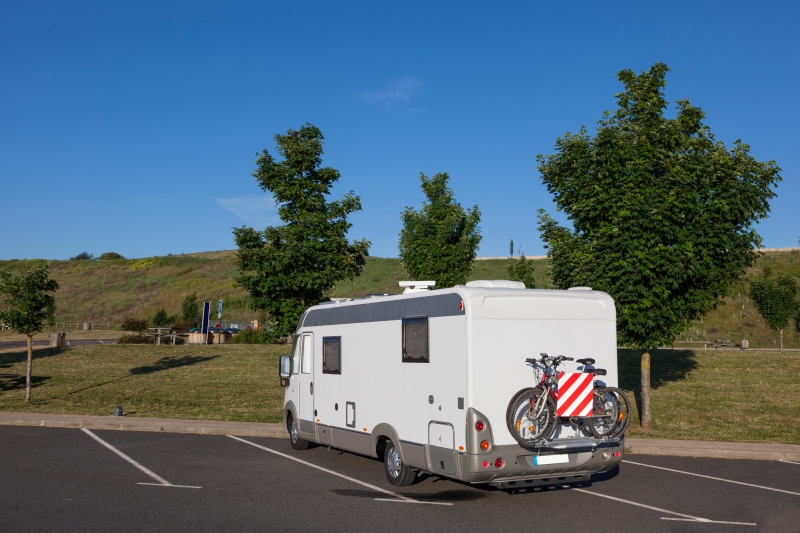“…And every man knew, as the captain did too, ‘Twas the witch of November come stealin’…” goes the infamous Gordon Lightfoot tune about the freighter, the Edmund Fitzgerald. The storms and winds that overtake the Great Lakes in the fall months have been the cause of tragedy, but tragedies are rare, thankfully. Still, it’s a well-known fact — and evident by the Great Lakes frothing with whitecaps — that autumn and winter cause some very blustery weather. And if that wind is evident on the water, its strength is also felt on land.
The large and typically boxy appearance of our RVs can be precarious when the wind gets high, especially if you’re traveling on the road. Even teardrop travel trailers with their curved design, and expandable travel trailers with their lower center of gravity, can still cause a white-knuckled ride in a fight with the wind.
But every RV is different – its weight, the wheelbase, how high it is off the ground, balance, and overhang over the rear axle all factor in, to name a few. Every driver is different, too. Some will be more comfortable moving along through the windy conditions while others will decide to pull off and wait for the weather to shift more in their favor.
When the winds get 20 mph or above, according to the sage advice of many RVers, you need to prepare yourself for what that could mean for your travel plans… and your driving. Think about these few simple tips:
- Slow down, even if you’re on an interstate highway, when there are high steady winds or gusting winds. It’s easier to maintain control of your motorhome or your tow vehicle if you’re at a lower speed.
- Keep both hands on the wheel to keep your RV steady and to avoid being pushed across lanes. Make sure you know where other drivers are at all times just in case an unintentional sway should occur.
- Take regular breaks to reduce the risk of fatigue. A tired driver shouldn’t be on the road. If you’re determined to keep traveling, at least stop frequently for a short break and to relax from the drive.
- Make sure all windows, vents, and doors are locked down as well as awnings put away before you start traveling. Although rare, there have been incidents of awnings blowing off on the highway and in conditions where wind was a factor.
- Drive a smaller highway or back roads where the speed limit is lower and there may be less traffic. You may also have more protection from the wind, such as traveling through forests.
- Pull off if you aren’t comfortable driving on at the first safe rest stop or exit, even an underpass. Wait it out, watch the weather, and find something to do to pass the time. If you need to wait an extra day or two, try not to stress over the change in plans. Enjoy the flexibility and convenience your RV provides you. It’s better to be safe than on time.
It’s up to you how to handle windy weather, but “be cautious” is still the motto of the day. Weather can change drastically at seemingly a moment’s notice in Michigan (see this article), so be prepared for what the witch might send you.

